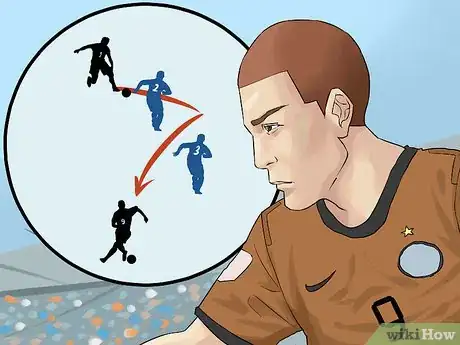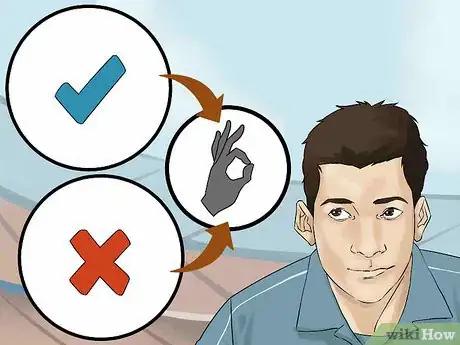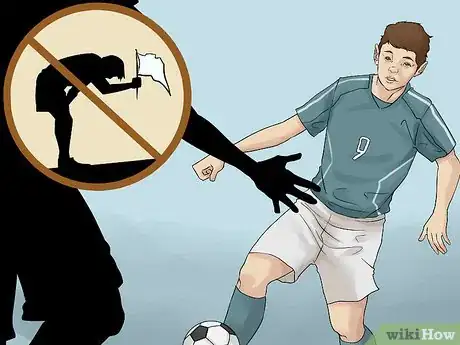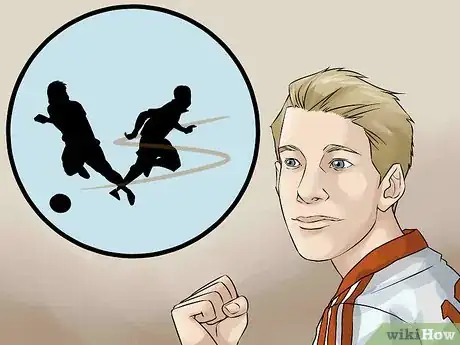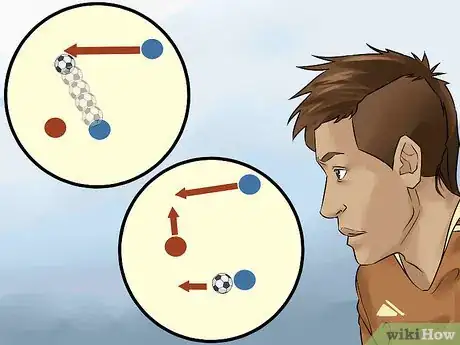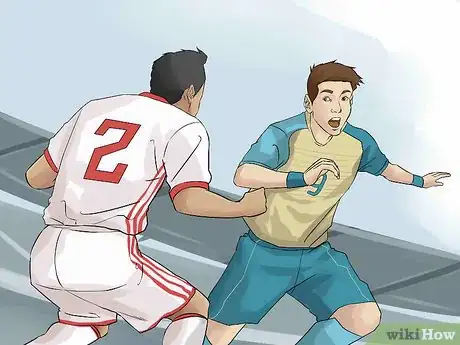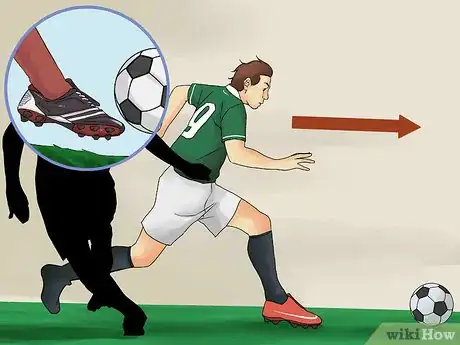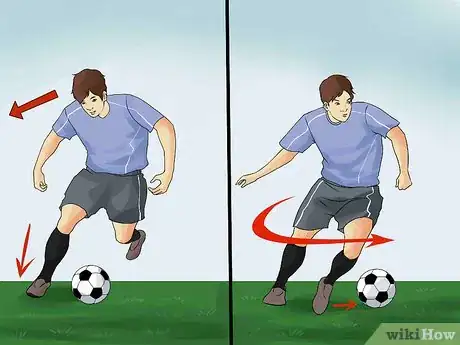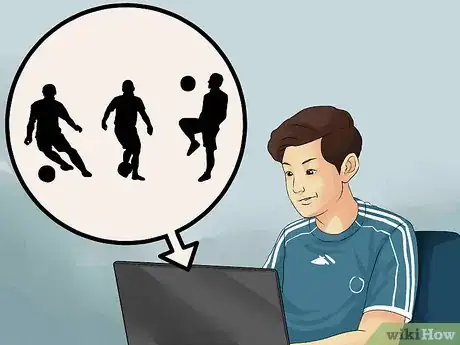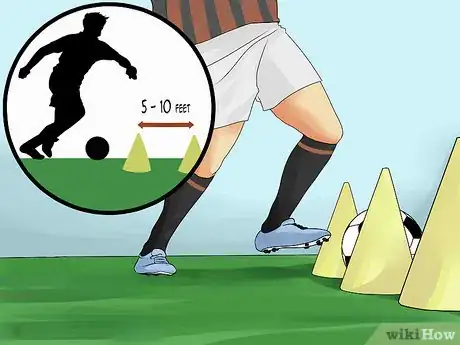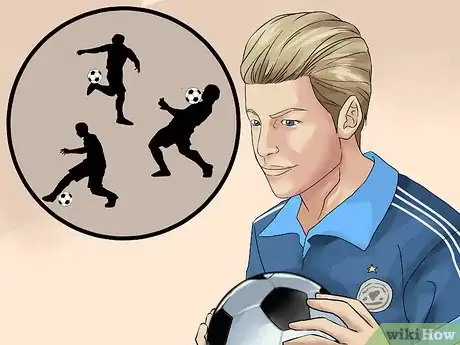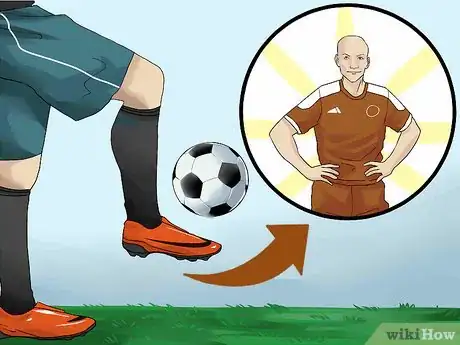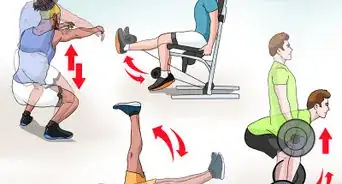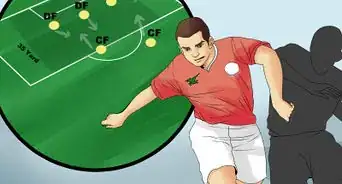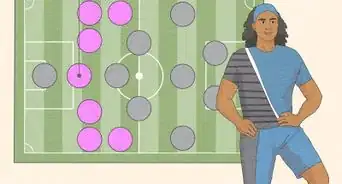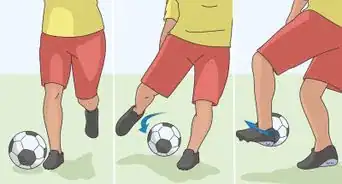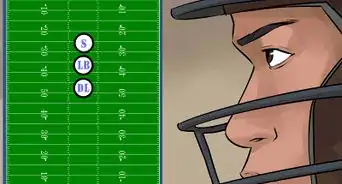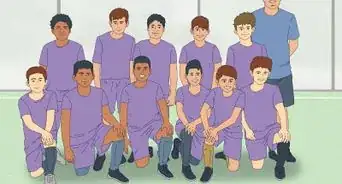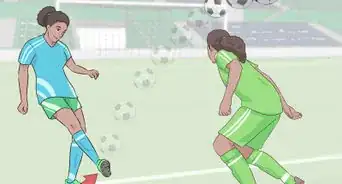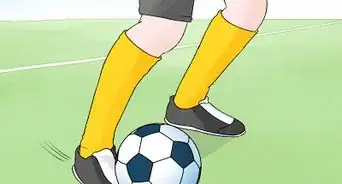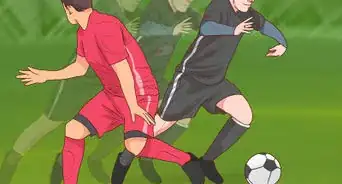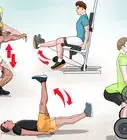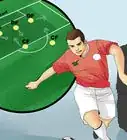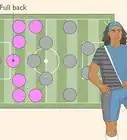This article was co-authored by Bernat Franquesa. Bernat Franquesa is the Co-Founder and Head of Methodology at APFC (Albert Puig Football Concepts), a youth development program for players and coaches with headquarters in San Diego, California. APFC provides soccer training for youth and educational content and consulting services for coaches, academies, and clubs. At APFC, Bernat is responsible for co-developing and applying technical guidelines for player development programs. He has been coaching soccer in Catalunya and the US since he was 15 years old.
wikiHow marks an article as reader-approved once it receives enough positive feedback. In this case, 95% of readers who voted found the article helpful, earning it our reader-approved status.
This article has been viewed 52,650 times.
If you're playing offensive soccer, it is essential that you can get past defenders. You don't need to know how to do fancy tricks to beat a defender. Quick fakes, speed-shifts, and direction changes will do the job! Perhaps most importantly, you'll need to be bold.
Steps
Being Confident
-
1Get into the right mindset.[1] This is the most important point. Just think to yourself "I am going to beat this defender," and it will come. You can beat them. Have faith in yourself, and never think for one second that you are going to fail.
- Remember that no two defenders are the same, and no two situations are the same. You may have messed up once, but that doesn't mean that you'll mess up again.
- Focus all of your energy and attention on the moment at hand. You will play more effectively and more smoothly if you aren't up in your head. Be present.[2]
-
2Be realistic about the consequences. If you fail to pass the defender, it won't be the end of the world. It will just be one mistake, and nothing permanent. You can always bounce back. You can hustle back down the field, give 110%, and redeem yourself by recovering the ball. Your teammates won't hate you for trying to win the game – more likely, they'll support your spirit.
- If you are getting a lot of negative feedback for your mistakes, consider talking to someone about it. No one should be heckling you for trying your best. Talk to a coach, a parent, or a team captain, and ask them to help you put a stop to it.
Advertisement -
3Don't give up. Try and try again, even if you keep losing the ball. The more you keep trying, the more likely it is that you will succeed. With enough persistence and dedication, you can accomplish almost anything.
- You don't need to try again right away. If the game is tight, don't keep throwing yourself at a tough defender. Be humble, and pass the ball away.[3]
-
4Be bold. You may not be certain that you can pass this defender, but you will regret it if you don't try. Life is dangerous, and fear is natural – but human beings define themselves by how they act in the face of fear. Even if you are never the star player on your team, you can be the sort of player who gives as much as he/she can in every single play.[4]
Passing the Defender
-
1Be aware of your teammates' positions. Before deciding whether you are going to beat the defender, you should look up and make yourself aware of your teammates positions on the field.[5] Listen for any calls from them – check whether it makes more sense to pass the ball off to someone. If possible, try to play the ball to a teammate who has more space to run.
- If one of your teammates is making a clever run, you could use their run as a decoy. If a defender is marking you, he may try to get back and cover the runner. This would give you more space and time to run at the defense, leaving them on the back foot and giving you time to think about what to do next.
- Alternately, a different defender may pull across to cover the run. This would create space in behind the defense, unless the fullback comes across as well. In this case, a long pass across the field would be appropriate. If neither defender tracks the run, try to play the killer ball behind the back line.
-
2Go for it. If no teammate is in a better position than you and no teammate is trying to run in behind, this is usually the green light for you to beat the defender. Be confident, quick, and decisive. Go and beat him!
-
3Knock the ball past the player and run after it. Most of the time, you don't need to do anything complicated to beat some defenders. With a quick turn of pace and good balance, all you have to do is knock the ball inside or outside of the player and sprint after it. Using feints (pretending to go one way and then going the other way) can help a lot with this.
-
4Fake the defender out. Make the defender think that you're going one way with the ball, then move off in a different direction. Run towards the defender, dribbling the ball. When you are again 2-3 feet away from the defender's leg-reach, shift your body language to the right or the left of the opposing player. Look in that direction, and give the opposing player every indication that you plan to charge in that direction.
- Drop your shoulder toward the side you want the defender to think you are charging, and keep your upper torso facing the same direction – around 25 degrees off-kilter from facing straight at the defender.
- Quickly tap the ball with the outside of your foot. if you want to fake going to the left of the defender, use your right foot; if faking right, use your left foot. Roll the ball very slightly toward the side you don't plan to take – then immediately tap the ball back on course.
- Charge past the defender and toward the goal.
Practicing to Build Confidence
-
1Practice. Practice all the moves that you know, and try to do them fluently. Start very slowly, on your own, and run through your tricks at a speed that would never fly in a game situation. Focus on technique rather than speed. The more comfortable you feel, the faster you'll get.[6]
- If you do not feel completely confident in your ability to beat a player, there are training drills online. Match-play skill move tutorials can be very helpful. Watch these, work with them, and put effort into your training sessions to acquire the skills to beat a defender.[7]
-
2Work on your ball control. The better you can handle the ball, the more confident you'll be in your ability to outplay a defender. Juggle the ball and work on your foot-eye coordination. Dribble through the tight spaces of your house to develop good ball control.
- Try setting up a line of cones (about 5-10 feet apart) and running drills. Weave through the cones, dribbling the ball, and be careful not knock any of them over.
- Pass the ball to yourself. Kick it off of a brick wall or pitch-back, and practice meeting the ball when it returns to you. This will hone your foot-eye coordination.
-
3Learn tricks. You don't need to know how to perform fancy tricks, but they may allow you to beat a player with more ease than before. Knowing a lot of tricks can help you tackle tough situations and feel more confident on the field – which will create room for more effective striking.
-
4Practice until you feel confident. The more you practice a move, the more sure of your ability you will be.[8] Practice with friends, with family, and by yourself. Work on your skills during team practices, and ask coaches or other players for advice on how to better execute these moves.[9]
- As you get stronger and stronger, the time will come to show your skills in a game situation. You don't need to plan too much – just be mentally prepared.
- If you can do it in practice, you can do it in games. If you've done this over and over in practice situations, then you've already succeeded. Be confident.
Expert Q&A
Did you know you can get expert answers for this article?
Unlock expert answers by supporting wikiHow
-
QuestionHow can I improve my dribble?
 Bernat FranquesaBernat Franquesa is the Co-Founder and Head of Methodology at APFC (Albert Puig Football Concepts), a youth development program for players and coaches with headquarters in San Diego, California. APFC provides soccer training for youth and educational content and consulting services for coaches, academies, and clubs. At APFC, Bernat is responsible for co-developing and applying technical guidelines for player development programs. He has been coaching soccer in Catalunya and the US since he was 15 years old.
Bernat FranquesaBernat Franquesa is the Co-Founder and Head of Methodology at APFC (Albert Puig Football Concepts), a youth development program for players and coaches with headquarters in San Diego, California. APFC provides soccer training for youth and educational content and consulting services for coaches, academies, and clubs. At APFC, Bernat is responsible for co-developing and applying technical guidelines for player development programs. He has been coaching soccer in Catalunya and the US since he was 15 years old.
Licensed Soccer Coach & Head of Methodology at APFC
-
QuestionSometimes I panic and kick as hard as I can when a defender is coming. What should I do?
 Community AnswerTake a deep breath and tell yourself "Focus". Then try to dribble or pass the ball to another player on your team. You might even try a fake pass to get around the defender.
Community AnswerTake a deep breath and tell yourself "Focus". Then try to dribble or pass the ball to another player on your team. You might even try a fake pass to get around the defender. -
QuestionHow can I dribble like Cristiano Ronaldo?
 Kamaal MohamedCommunity AnswerYou have to practice the stepover until you feel comfortable. Then practice doing the stepover past the defender until you feel comfortable.
Kamaal MohamedCommunity AnswerYou have to practice the stepover until you feel comfortable. Then practice doing the stepover past the defender until you feel comfortable.
Warnings
- You might lose control or balance during certain tricks.⧼thumbs_response⧽
- Do not do many tricks. Try to be more effective!⧼thumbs_response⧽
References
- ↑ Bernat Franquesa. Licensed Soccer Coach & Head of Methodology at APFC. Expert Interview. 3 March 2020.
- ↑ http://www.soccerpsychologytips.com/
- ↑ http://www.soccer-training-info.com/play_soccer_with_confidence.asp
- ↑ http://www.active.com/parenting-and-family/articles/5-ways-for-young-athletes-to-build-confidence
- ↑ Bernat Franquesa. Licensed Soccer Coach & Head of Methodology at APFC. Expert Interview. 3 March 2020.
- ↑ Bernat Franquesa. Licensed Soccer Coach & Head of Methodology at APFC. Expert Interview. 3 March 2020.
- ↑ http://www.saysoccer.org/coachingskillsanddrills.aspx
- ↑ Bernat Franquesa. Licensed Soccer Coach & Head of Methodology at APFC. Expert Interview. 3 March 2020.
- ↑ http://forums.bigsoccer.com/threads/how-to-be-more-confident-with-the-ball.814171/
